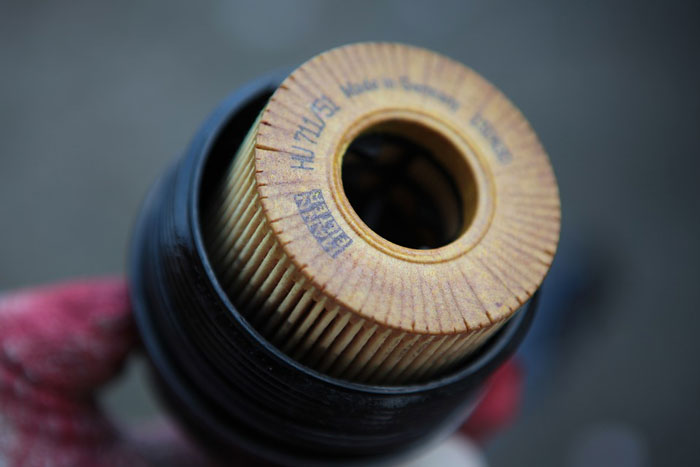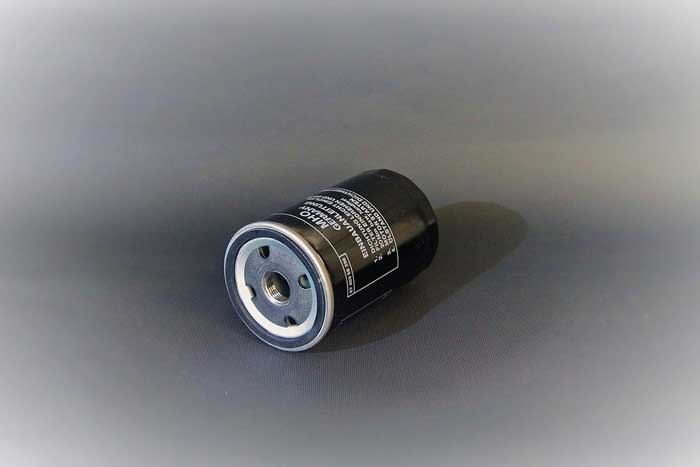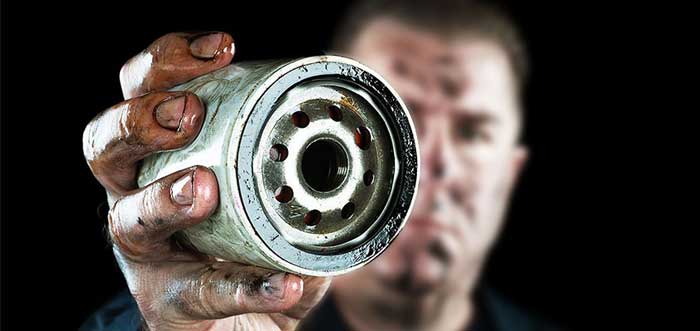What Are The Different Types of Oil Filters?
by Chris Lewis.
Motor oil is the driving force behind your engine’s life. It protects your car’s engine and enhances its performance and productivity. However, on its way through your engine, the oil gathers organic and inorganic impurities that can ruin your engine, bringing it closer and closer to its inevitable death.
In order to avoid such issues, you should consider getting oil filters for your car that will purify the oil before it starts its journey through the engine. If you want to know about the different types of oil filters that may benefit your car or any other vehicle, do check out this article.
Contents
Types of oil filter media

Oil filters are composed of membranes or media that decontaminate the motor oil as it flows through the system.
- Cellulose filter media: These are usually found in biodegradable oil filters. It can keep back particles as small as 8 to 10 microns in diameter and can purify 40% of the liquid oil. It needs to be changed after driving 3000 miles.
- Synthetic filter media: These are found in more top grade oil filters. It can purify 50% of impurities in the range of 20 to 40 microns and 24% of impurities in the range of 8 to 20 microns. This type of filter needs to be checked after driving 5000 to 7000 miles.
- Microglass filter media: These are highly delicate metal membrane or microglass found in best quality oil filters. The microglass network is composed of fibers that are ten times more lightweight than cellulose filter media. They prevent holding back the oil. They are high end filter media and thus needs to be changed only after 2 to 5 years.
Types of oil filters

Primary oil filters
These are the more usual types of motor oil filters. They are also known as full flow filters and they remove 100% impurities. Oil filters restrict the circulation of oil as they need to filter it constantly. Restricting the flow of oil damages the motor engine. In order to prevent this, primary oil filters lessen the hindrance to the course of oil.
In cold weather, the motor oil sets, which causes it to move more slowly through the system. This is not a problem with primary oil filters because they do not prevent the oil from passing smoothly through the engine.
This is owing to the fact that this kind of filter allows the passage of relatively larger particles. In the scenario when the membrane becomes too jam packed with contaminants, car builders put in a bypass valve as a safety measure.
This redirects the passage of oil so that it can continue its job of greasing the engine. Even if the filter gets congested with pollutants, there exists a pressure system that detours the course of motor oil so that the oil can reach the engine and carry on with its vital task.
Secondary oil filters
These oil filters are an additional incorporation into your car’s system besides the primary oil filters. However, secondary filters work separately from its primary counterpart. They filter a small amount of motor oil and cleanse the oil from extra pollutants.
This has an advantage because you don’t need to change the oil time and again as supplementary filters are doing their job besides the primary filters.
If your vehicle doesn’t come with secondary oil filters by default, you can always incorporate them later on. Secondary oil filters are also known as bypass filters but they are very different from bypass valves.
Conventional oil filters
These are another kind of secondary filters and they employ cellulose filter media. They need to be changed repeatedly because they rid the oil from smaller size pollutants.
Thermal chamber oil filters
These filters have two functions. They not only filter oil like conventional oil filters do but they have another feature as well. They increase the temperature of the oil so that some contaminants can burn or dissolve. For this purpose these filters need to use electricity.
This implies they use up your car’s electricity supply, thus bringing down its fuel productivity. This is a drawback of this kind of filter.
Spinner filters
They are also known as centrifugal oil filters. These filters spin at high speeds which causes the impurities present in the oil to be pushed to the bottom of the filters. The filters consist of a membrane and a housing chamber. If the membrane becomes clogged with contaminants, it has to be changed.
But the housing chamber remains intact and can still be used effectively. At the bottom of the filters, there is a base gasket that restricts oil from spilling through the filters. However it is not long lasting. The base gasket needs to be checked after driving for 3000 miles.
Magnetic oil filters
These filters, as the name implies, are magnetic and hence attract small metal contaminants present in the oil and remove them. They cannot attract dust and therefore dust particles cannot be removed by these filters. There is no need to change these filters but if you just clean them regularly and thoroughly that should make them deliver optimum service.
Structure of today’s oil filters

Tapping Plate
This is the component through which motor oil enters and also leaves the filter. It resembles in appearance a hole in the center which is encircled by smaller holes. Oil first courses through the tiny holes, then the filter membrane, the center hole and then finally reaches the engine.
Filter Material
This is a network of synthetic fibers which screen dust and gunk in the oil. The substance is creased into pleats that increase the surface area for better grime filtration.
Anti-Drain Back Valve
When your car is not in operation, this part acts as a gate that closes to inhibit motor oil from trickling from the engine into the filter.
Relief Valve
When the mercury dips, oil becomes thicker and unable to reach the filter. This particular component releases a little portion of unfiltered oil that adds to the total volume of oil which allows your engine to function pretty efficiently.
End Discs
There are two of these, one on each end of the filter that inhibits unfiltered oil from draining to the engine. They are made of either metal or fiber.
Conclusion
Oil filters are analogous to the kidneys working in the human body. Kidneys filter the blood and purify it from harmful particles and chemicals that may damage the body.
Similarly, oil filters clean motor oil by removing dangerous pollutants and contaminants from it that may affect the efficiency of the vehicle. Thus oil filters assist in making your engine work faster and longer.
 |
 |
 |
 |

About Chris Lewis.
Chris Lewis is a passionate individual with a deep affinity for the world of automobiles. From a tender age, his fascination with cars was nurtured by his father, a seasoned mechanic based in the vibrant city of San Francisco. Growing up under the watchful guidance of his skilled father, Chris developed an early aptitude for all things automotive.
Thoughts on "What Are The Different Types of Oil Filters?"
 |
 |
 |
 |
Check These Out
Get FREE Filters now. Or latest free tools from our best collections.
Disable Ad block to get all the secrets. Once done, hit any button below
 |
 |
 |
 |